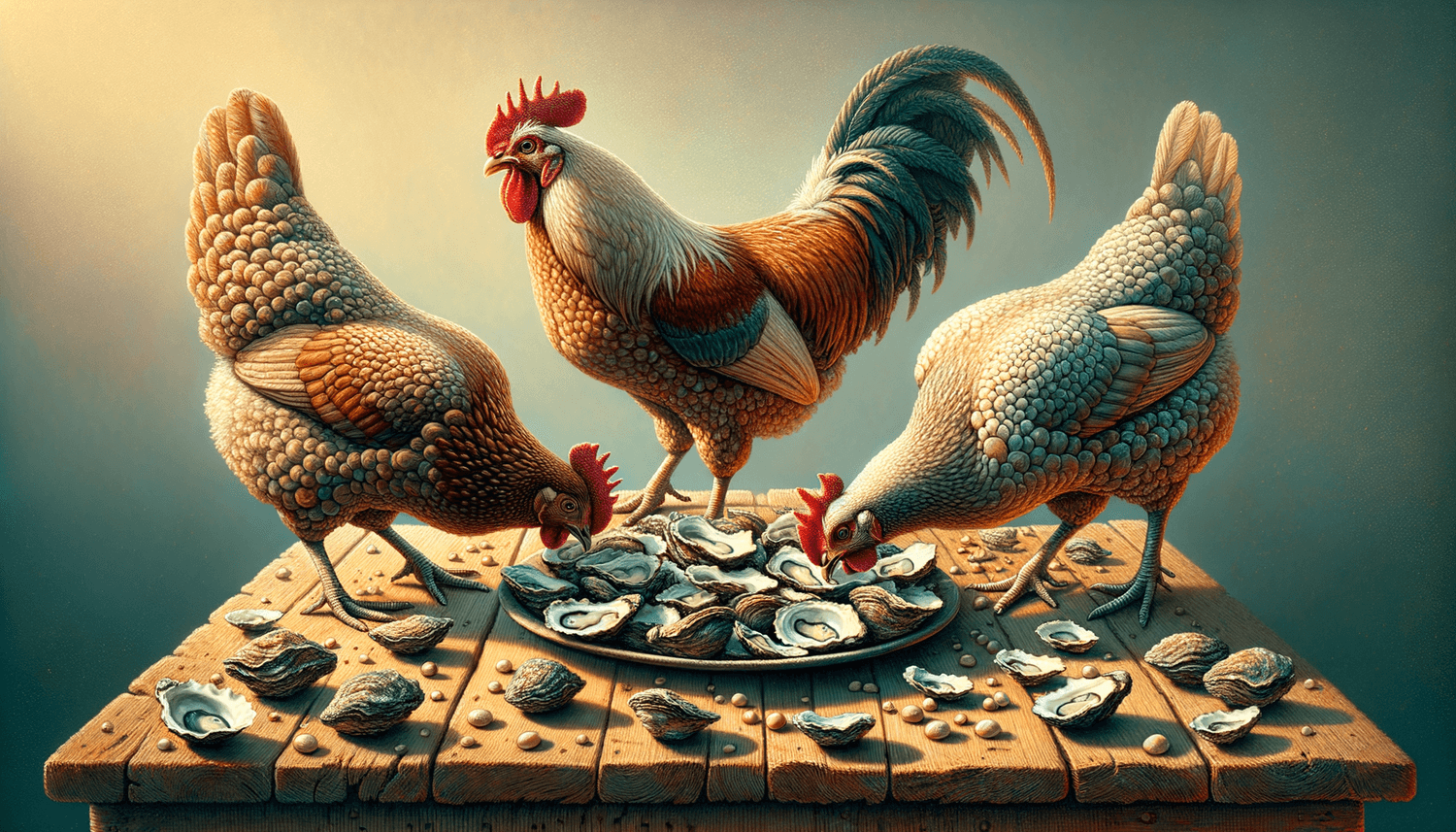Cluck, cluck! Let’s dive into a topic that will have your backyard chickens clucking with joy – oyster shells! You might be wondering, “Can my feathered friends really eat oyster shells? What are the benefits, if any? And how do I go about serving these calcium-rich seafood wonders?” Don’t worry, because this blog will answer all your egg-citing questions and guide you on your feathery adventure toward a more balanced and nutritious diet for your beloved flock.
Can chickens eat oyster shells?
Yes, chickens can eat oyster shells, and it is safe for them to do so. Oyster shells are a great source of calcium, which is essential for the formation of strong eggshells and healthy bones. Providing oyster shells to your backyard chickens can help prevent issues such as soft-shelled eggs and reduce the risk of egg-laying complications.
A balanced diet for chickens
Just like humans, chickens need a balanced diet to maintain optimal health and wellbeing. A chicken’s diet should primarily consist of a high-quality chicken feed, making up the bulk of their nutritional intake, around 80-90%. Chicken feed is specifically formulated to provide the essential nutrients, vitamins, and minerals that will ensure your flock is healthy and happy.
The remaining 10-20% of their diet can be made up of treats like fruits and vegetables. These goodies not only add variety to your chickens’ meals, but also supply additional vitamins and minerals that can boost their overall wellbeing. However, it’s crucial to remember that these are supplementary to their main chicken feed, and should be offered in moderation to maintain the balance of nutrients that is essential for optimal health.
Nutritional value of oyster shells for chickens.
Feeding oyster shells to chickens holds significant nutritional value, particularly due to their high calcium content. Calcium is absolutely vital for chickens, as it is required for healthy bone development and, importantly, for the production of strong eggshells. Insufficient calcium in a chicken’s diet can result in weak, soft-shelled eggs and increased vulnerability to developing bone disorders.
Another benefit of offering oyster shells to your chickens is that they serve as a natural grit, which helps facilitate the digestion process. Chickens lack teeth and instead utilize a unique organ called the gizzard to grind up their food. The gritty texture of the oyster shells assists in breaking down the food in the gizzard, which in turn allows for improved digestion and absorption of nutrients.
Oyster shells also contain trace minerals such as phosphorus, which plays a crucial role in the formation of strong skeletal structures, energy metabolism, and the maintenance of healthy cell membranes. Further, oyster shells can help balance the pH levels in the digestive system, thanks to their alkalinity. This can contribute to a healthier gut environment, which is essential for the proper functioning of a chicken’s digestive process.
Nutrition table of oyster shells for chickens.
| Information | Description |
|---|---|
| Nutritional Value | High calcium content, trace minerals like phosphorus |
| Suggested Serving Size | Offer in a separate dish or feeder, allowing chickens to self-regulate intake |
| Safe Feeding Practices | Ensure shells are clean, properly crushed or ground before serving |
| Preparation | Rinse shells, air dry, crush or grind, and place in a separate container |
| Potential Risks | Minimal risks when fed in moderation, as part of a balanced diet |
| Hydration | Oyster shells don’t provide hydration but can help balance pH levels in the digestive system |
| Digestion | Act as a natural grit to help break down food in the gizzard, promoting digestion |
| Seasonal Availability | Available year-round at feed stores or sourced from seafood restaurants |
| Other Benefits | Strengthen eggshells, support bone health, and aid in maintaining a healthy gut environment |
Introducing oyster shells to your flock
When introducing oyster shells to your backyard chickens, it’s important to do so gradually and monitor their consumption. By offering oyster shells in a separate dish or feeder, you allow your chickens to self-regulate their intake depending on their individual needs. This ensures that they consume an appropriate amount of calcium without overindulging.
Where to find oyster shells
Oyster shells can be found in most feed stores, either in pre-crushed or ground form. Alternatively, you can source fresh oyster shells from seafood restaurants – just be sure to properly wash and air dry them before crushing or grinding. Once prepared, simply place the shells in a designated container that is easily accessible for your chickens.
Alternatives to oyster shells
If you cannot find oyster shells, don’t panic! There are alternative calcium supplements for your backyard chickens, such as crushed eggshells or limestone. Although oyster shells are generally considered the preferred source of calcium due to their fine texture and excellent absorption, these alternatives will still provide the required calcium for healthy eggshell and bone development.
Keep an eye on your flock’s health
Keep a close watch on your chickens to ensure they’re adapting well to the addition of oyster shells in their diet. Observe their behavior, energy levels, and egg production for any noticeable changes. If you see any negative changes, consult with a veterinarian experienced in poultry care to ensure your chickens are receiving the right balance of nutrients in their diet.
By providing your chickens with oyster shells as a reliable source of calcium and maintaining a balanced diet, you’ll ensure your flock remains healthy, content, and laying eggs with strong, robust shells.

















